
A leaking radiator in a Fiat 500 can cause the engine to overheat, resulting in costly damage to the head gasket or a cracked head if not addressed promptly. It is important to recognize the signs of a radiator leak and take action quickly to avoid long-term engine damage.
Identifying the symptoms of a radiator leak in your 500 will help you take the necessary steps to resolve the issue before it becomes worse.
You should be aware of the common signs of a radiator leak. The most common symptom is the presence of coolant on the ground beneath your car, which could indicate a leak from the radiator itself or the hoses connected to it.
Keep a very close eye on your temperature gauge and coolant level. If enough coolant leaks out, your 500 will run hot or overheat. Once you’ve found a leak in your 500’s radiator, repairing or replacing the radiator should be considered an absolute priority.

Table of Contents
Signs of a Leaking Radiator in the 500
It is essential to recognize early on if your Fiat 500 is leaking coolant from the radiator. Doing so will help you avoid more costly and significant issues in the future. Common signs to watch for include overheating, a squealing belt, a decrease in coolant level, white smoke, and colorful puddles under the vehicle.
Overheating
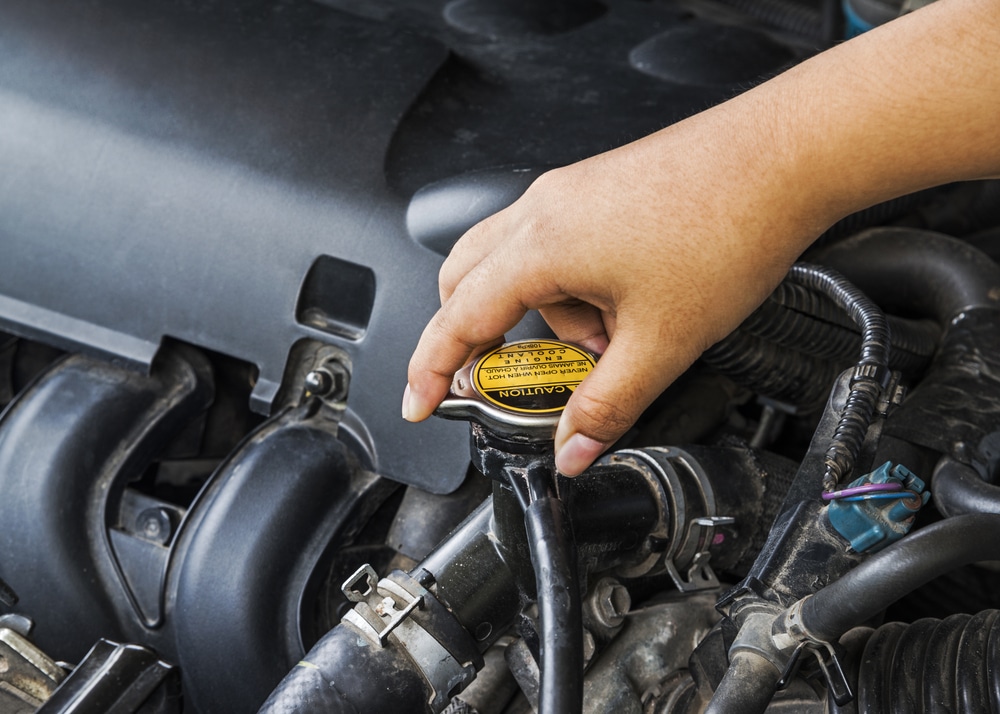
Your Fiat 500 may start to overheat if there is a leak in the radiator. This occurs because the coolant, which helps regulate engine temperature, leaks out and results in insufficient cooling.
Signs that your vehicle is experiencing overheating include:
- Steam coming from the hood
- High engine temperature gauge readings
- Reduced engine power
If you notice any of these signs, pull over safely and allow your vehicle to cool down before assessing the issue further.
Squealing Belt
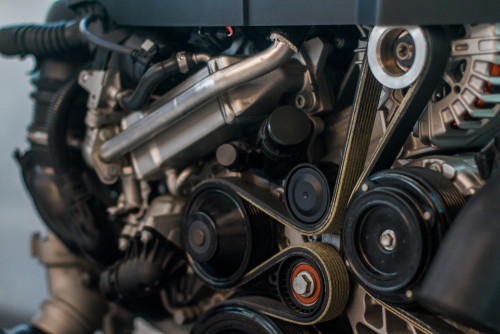
Depending on where the radiator is leaking, it can get coolant onto the serpentine belt. This can cause a loud squeal. That is the sound of the serpentine belt slipping from the coolant. This can lead to the engine accessories not turning fast enough to do their job.
Coolant Level Drop
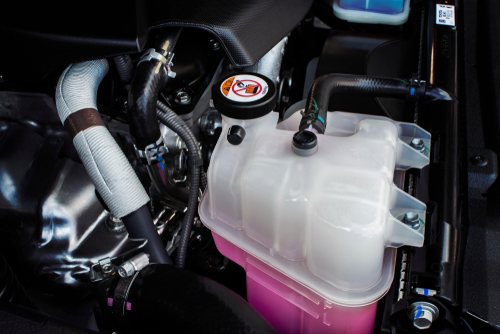
Another sign of a leaking radiator is a constant decrease in coolant levels. If your coolant reservoir tank is frequently low, even after topping it off, it could indicate a leak in the radiator or its components. To monitor coolant levels:
- Regularly check your coolant reservoir tank for adequate fluid
- Look for any signs of leakage around the engine bay
Be sure to top off the coolant as needed until a proper repair can be made.
White Smoke
As the coolant hits the hot engine or exhaust, it can cause white smoke to shoot out from under the hood, even if you are not overheating.
Colorful Puddles under your Carortruck
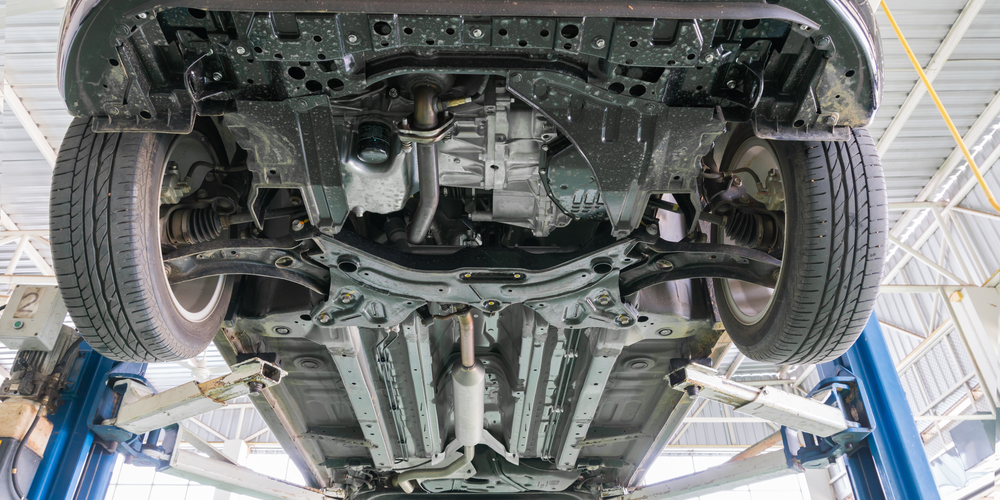
Lastly, one of the most evident signs of a radiator leak is the presence of colorful puddles under your car.
This often resembles a mix of green, orange or pink liquid, depending on the coolant used in your Fiat 500. Keep an eye out for puddles in these situations:
- After your 500 has been parked for a while
- Underneath the front bumper or around the wheels
If you notice any colorful puddles, it’s time to have your radiator checked and repaired as soon as possible to prevent more significant issues from arising. It’s essential to address leaks promptly to keep your Fiat 500 running efficiently and reliably.
Causes of a Radiator Leak: Fiat 500
The most common causes of a radiator leak in a Fiat 500 are corrosion and grime buildup, lack of regular maintenance, pressure issues, and physical damage. We will look at each of these causes in more detail below.
Corrosion and Grime
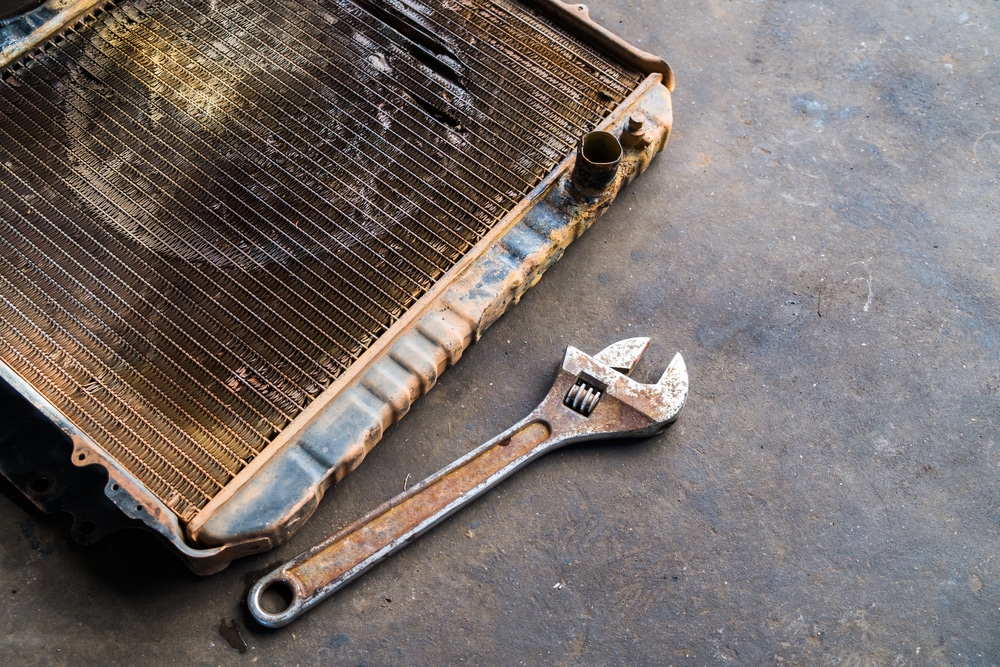
Over time, your Fiat 500’s radiator can experience wear and tear due to constant exposure to heat and pressure.
This can lead to rust and corrosion, which can cause cracks to develop in your radiator. If these cracks become large enough, engine coolant may begin to seep out.
Additionally, the accumulation of grime and dirt may lead to further corrosion and, ultimately, leaks.
Improper Maintenance
Neglecting to maintain your radiator can lead to leaks. For example, if you fail to clean your radiator, debris and contaminants can buildup, increasing the risk of corrosion.
Furthermore, not using the appropriate coolant mix or replacing it as necessary can also contribute to the deterioration of your vehicle’s radiator.
Pressure Issues
Radiators are designed to handle a specific pressure range, and exceeding that range can lead to leaks.
If your cooling system is experiencing excessive pressure, it may cause the radiator walls to bulge, weaken, and eventually develop holes that allow coolant to escape. This pressure issue can be caused by a malfunctioning thermostat or radiator cap, or even an obstructed venting channel.
Physical Damage
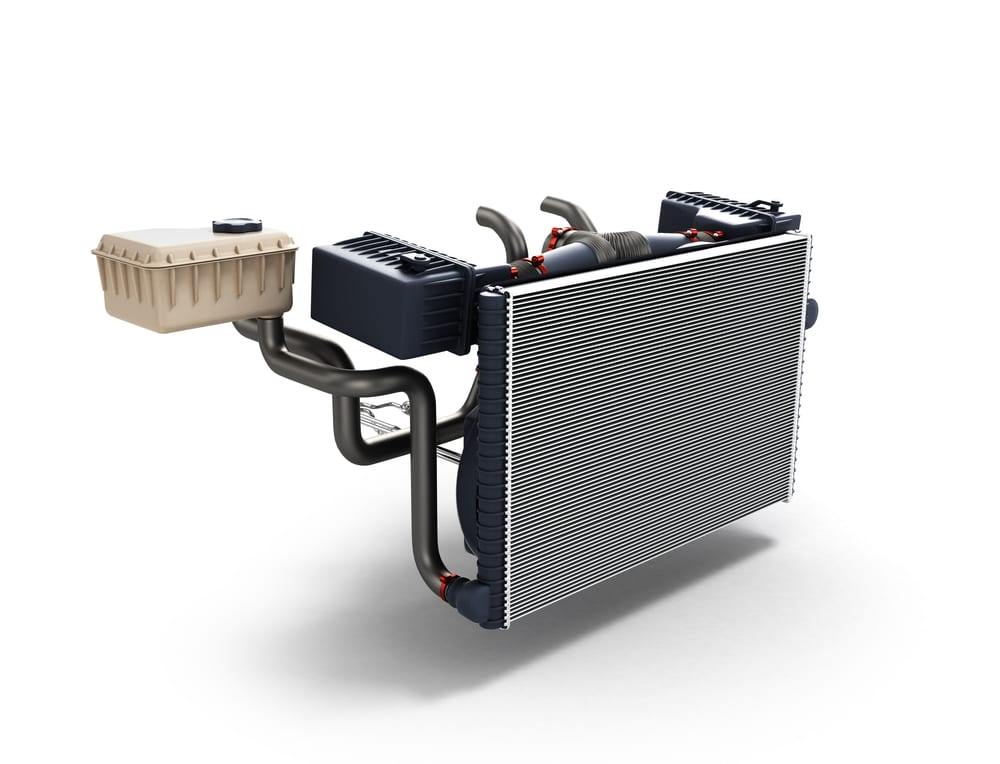
External factors can also cause radiator leaks in your Fiat 500. For example, rocks or debris may puncture your radiator while driving or even during off-road adventures, resulting in leaks.
Additionally, excessive vibration or impact, such as from an accident or hitting a large pothole, may damage your radiator and cause leaks.
How to Fix a Radiator Leak
DIY Fixes
If you’ve noticed your Fiat 500’s radiator is leaking, you can attempt some do-it-yourself fixes before resorting to professional help.
- Identify the leak: First, ensure the engine is cool and inspect the radiator to locate the leak. Check for visible drips, moisture, or white streaks on the surface.
- Use a radiator sealant: You can purchase a radiator sealant or stop leak product from your local auto parts store. Follow the instructions on the package to properly apply the sealant. This can be a temporary solution to seal minor leaks.
- Replace the radiator hose: If the leak is at the connection between the radiator and the hose, it’s possible that the hose clamp is loose or the hose has deteriorated. Tighten the clamp or replace the hose if necessary.
Professional Repairs
If the DIY methods don’t resolve the issue, or if you’re uncomfortable attempting repairs yourself, it’s best to consult a professional mechanic.
- Radiator repair: A professional can assess the extent of the leak and determine whether the radiator can be repaired. If it’s a simple leak, they may be able to fix it by soldering the damaged area or using a high-quality sealant.
- Radiator replacement: In some cases, a radiator may be too damaged or corroded to repair. A mechanic can recommend and install a suitable replacement radiator for your Fiat 500.
Remember, addressing a radiator leak promptly is essential to prevent further damage to your vehicle. By following the steps above and seeking professional help when needed, you can fix the leak and keep your 500 running smoothly.
Testing for a Radiator Leak
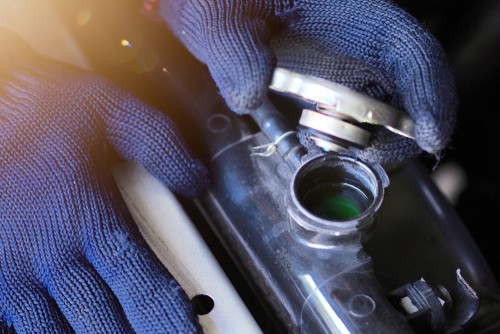
To check for a Fiat 500 radiator leak, follow these steps:
- Inspect your coolant levels: First, ensure your vehicle is off and has cooled down. Open the hood, locate the coolant reservoir, and check the coolant levels. If the coolant is consistently low, it could indicate a leak in the radiator.
- Look for visible leaks: With the vehicle parked on a level surface, visually inspect the radiator for signs of leakage. Common areas to check include the base of the radiator, coolant hoses, and thermostat housing.
- Use a pressure tester: A pressure tester can help you identify the source of the leak. Attach the tester to the radiator cap opening and pump it to increase the pressure within the cooling system. Look for escaping coolant as the pressure rises.
- Check for coolant under the vehicle: If there is coolant under your vehicle, especially near the front bumper, it may be due to a leaking radiator. If the coolant is further back, consider checking the radiator hoses and thermostat housing for leaks.
Remember, if you confirm a radiator leak, have it repaired or replace the radiator as soon as possible to avoid further damage to your vehicle.
Preventing Future Leaks
To prevent radiator leaks in your Fiat 500, it is essential to follow some preventative measures. In this section, we will discuss two key aspects: Regular Maintenance and Using Quality Coolant.
By maintaining your vehicle and using the right coolant, you can avoid radiator issues and keep your 500 running smoothly.
Regular Maintenance
Proper maintenance is crucial in preventing radiator leaks. Some points to consider for regular upkeep include:
- Inspect the radiator and hoses: Regularly check your radiator for any visible signs of damage or wear, and inspect the hoses for cracks or kinks that might lead to leaks. Replace damaged hoses and tighten loose clamps.
- Monitor coolant levels: Keep an eye on your coolant levels and top up when necessary. Low coolant levels could indicate a leak, and they might cause the engine to overheat.
- Flush the coolant system: Perform a coolant flush every 30,000 to 50,000 miles, or as per the recommendations in your owner’s manual. This helps remove any debris or buildup, maintaining the efficiency of your cooling system.
Using Quality Coolant
Selecting the right coolant for your Fiat 500 is another essential factor in preventing radiator leaks. Be sure to:
- Choose a compatible coolant: Use a coolant specified for your vehicle, as recommended by Fiat. This ensures optimal performance and protection for your engine.
- Use premixed coolant: Opt for a premixed coolant that contains both antifreeze and water. This eliminates the need to mix your coolant and maintains the correct balance to prevent damage to the engine.
- Avoid cheap alternatives: Avoid using inferior quality or generic coolants. Although they might be less expensive, they can cause harm to your vehicle’s cooling system, leading to leaks and potential long-term damage.
By regularly maintaining your vehicle and using the right coolant, you can reduce the risk of radiator leaks in your Fiat 500 and protect your vehicle’s overall performance.
Conclusion
The Fiat 500 radiator leaking issue is a common one, but it should not be taken lightly. If left unchecked, it can lead to serious engine damage. Fortunately, the symptoms, causes and fixes are easy to identify and address. With a little effort and some basic knowledge, you can keep your Fiat 500 running in top condition for years to come.
